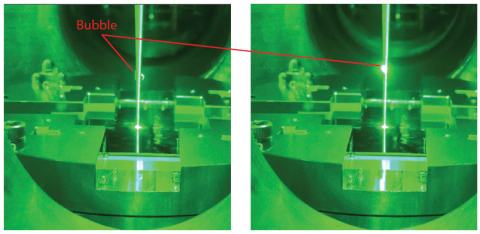
In this project, we implement a LASER-based technique to controllably generate bubbles on a heated surface. A numerical model is developed to capture this process of artificial nulceation and bubble growth. The objective is to enable a more focused study of bubble behavior in boiling for enhancing this phase change heat transfer process.
Phase change processes such as evaporation, boiling, and condensation are extremely important heat transfer mechanisms in many industrial applications. Of these, boiling is of fundamental importance in industries such as power generation, chemical processing, desalination, and electronics thermal management. Although the physics of the boiling process has been a subject of active research for more than a century, many aspects of this complex phenomenon, which involves coupled fluid mechanic, heat transfer and phase change processes, remain to be understood. This is especially important due to active ongoing research looking at various new techniques to improve boiling heat transfer performance parameters such as the critical heat flux and the heat transfer coefficient.
Although the boiling performance parameters are intricately linked to the the mechanisms of bubble growth and departure (or the bubble ebullition process), achieving a proper understanding of bubble behavior is challenging, especially in the presence of boiling surface modifications. There are several reasons for this. First, bubble ebullition is a really fast as well as short-timescale process requiring the use of advanced imaging techniques. Second, the bubble behavior is dictated to a big extend by the behavior of the contact line microlayer, which is difficult to capture due to the small length scale involved. Third, it is quite difficult to achieve proper visualization of a single bubble under actual boiling circumstances due to the statistical nature of boiling. Since bubbles nucleate randomly on the boiling surface, it is difficult to predict and therefore focus on a single bubble properly, and further, the neighboring bubbles often block the view path in addition to affecting the overall behavior of the bubble in question.
To enable a more focused study of single bubbles in boiling, in this project we implement a LASER-based technique to controllably generate bubbles under normal boiling conditions. The technique employs a combination of timed laser pulses and electrical heating to nucleate well-defined bubbles on the boiling surface. The effect of laser characteristics such as pulse power, pulse width, and pulse frequency on bubble ebullition behavior will be studied. A numerical model will be developed to explain artificial bubble nucleation using laser-induced transient heating of the substrate in contact with the liquid.
